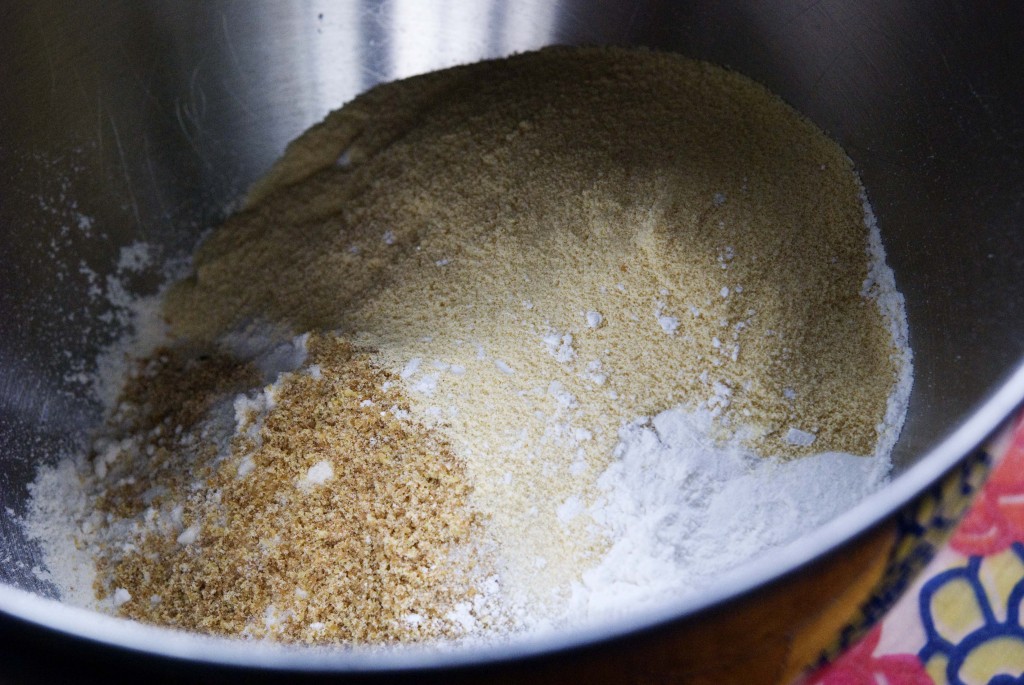Whilst The International Olympic Committee Consensus On Sports Nutrition states the ‘importance of protein for athletes has long been recognized’ (R.J. Maughan et al. 2004) there have been few studies that look into the different forms of protein for different types of athletes depending on their nutritional goals, food intolerances or dietary preferences. That’s why we’ve decided to look at the research surrounding the various proteins on the market examining everything from the amino acid profile, absorption rates or hypoallergenic properties of each.
Best Protein For…Protein Synthesis
Of particular interest for strength athletes is a proteins ability to induce protein synthesis immediately post workout. This is because, as most athletes will know, resistance training provides the necessary stimulus to your muscles for them to repair and regrow bigger but equally the initial bout of exercise also causes a negative net protein balance i.e. overall muscle breakdown (S.M Phillips, 1997). This negative net protein balance must be counteracted as soon as possible if the athlete’s goal is to increase muscle mass since o therwise it’s believed the protein balance will remain negative and the ‘stimulus’ of weight training will be ineffective (Vinod Kumar et al, 2009). One way of effectively kick-starting protein synthesis is to choose a protein with a high concentration of the amino acid leucine. This is because research shows leucine activates a major complex in the anabolic pathway called the mammalian target of rapamycin (mTOR) (S.M Phillips, 1997).The mTOR is basically one of the body’s protein synthesis regulators, energy sensors and nutrient sensors of amino acid availability, specifically of leucine. It’s deactivated when leucine concentrations in the body are low and it signals to the body that there isn’t enough dietary protein present to synthesize new skeletal muscle protein. But conversely as leucine concentrations increase, mTOR is activated and signals to the body there is sufficient dietary protein to synthesize new skeletal muscle protein. For this reason Native Whey protein is considered the best protein since it has higher levels of leucine (3 grams of leucine per 25g serving) due to the unique manufacturing process it undergoes. Unlike other proteins, Native Whey is made by extracting the proteins directly from skimmed milk using membrane technologies at low temperatures (a process known as microfiltration and ultrafiltration) since this ensures the protein obtains an even better amino acid profile.
therwise it’s believed the protein balance will remain negative and the ‘stimulus’ of weight training will be ineffective (Vinod Kumar et al, 2009). One way of effectively kick-starting protein synthesis is to choose a protein with a high concentration of the amino acid leucine. This is because research shows leucine activates a major complex in the anabolic pathway called the mammalian target of rapamycin (mTOR) (S.M Phillips, 1997).The mTOR is basically one of the body’s protein synthesis regulators, energy sensors and nutrient sensors of amino acid availability, specifically of leucine. It’s deactivated when leucine concentrations in the body are low and it signals to the body that there isn’t enough dietary protein present to synthesize new skeletal muscle protein. But conversely as leucine concentrations increase, mTOR is activated and signals to the body there is sufficient dietary protein to synthesize new skeletal muscle protein. For this reason Native Whey protein is considered the best protein since it has higher levels of leucine (3 grams of leucine per 25g serving) due to the unique manufacturing process it undergoes. Unlike other proteins, Native Whey is made by extracting the proteins directly from skimmed milk using membrane technologies at low temperatures (a process known as microfiltration and ultrafiltration) since this ensures the protein obtains an even better amino acid profile.
Best Protein For….Additional Nutrients and EFA’s
Widely considered to be one of the best whole, non-genetically modified well-rounded proteins on the market today, Hemp protein is not only a great source of protein but also a good source of healthy fats too (as well as fibre, antioxidants, vitamins, minerals, and chlorophyll). This is why many athletes look to incorporate hemp protein into their diets since EFA’s have been well documented to be beneficial to athletes aiding in everything from decreasing muscle breakdown, decreasing inflammation, increasing muscle growth, speeding up recovery time, supporting optimal hormone secretion and supporting healthy joints and connective tissue. Looking more closely at the nutritional breakdown of Hemp protein it’s about 44% healthy oils by weight, out of this 44% oil 80% is essential fatty acids (EFAs). It has a 3:1 ratio of omega 6s to omega 3s which is considered ‘optimal’ by the World Health Organization. Plus it can be further defined as 55% linoleic acid and 1-4% gamma-linolenic acid, which both are omega 6 acids. Notably gamma linolenic acid is quite hard to get in the diet yet hemp protein is a great source. The remaining third of the EFAs are alpha-linolenic acid (ALA) at 22% and stearidonic acid (SDA) at 0-2%, which are omega 3 acids.
Best Protein For….Vegans and Vegetarians
Whilst Soy protein is often chosen by vegetarian or vegan athletes as an effective alternative to whey protein, it also has a range of benefits other than supporting dietary preferences. Firstly it’s considered a complete protein source since it contains an adequate amount of all 9 essential amino acids. More specifically it has a high concentration of Branch Chain Amino Acids, Glutamine and Arginine which is why Soy protein is considered so effective in helping to maintain and even build muscle mass (I. Dragan et al, 1990) expelling the myth that soy protein is a sub-standard protein source in comparison to whey. Lastly in a study conducted at Nippon Sport Science University it was found soy exerts potent antioxidant effects, perhaps counteracting exercise-induced oxidant stress (Y. Song et al 1996).
Best Protein For… Hypo-Allergenic
For some athletes meeting their daily requirement of protein can prove difficult if they cannot tolerate egg, milk and soy derived protein due to allergies. Perhaps most common is lactose intolerance since as stated by N.S Scrimshaw and E.B Murray (1988) ‘most humans, like other mammals, gradually lose the intestinal enzyme lactase after infancy and with it the ability to digest lactose, the principle sugar in milk.’ To give you an idea of how widespread it can be, the same researchers predicted it affected 79% of Native Americans, 75% of blacks, 51% of Hispanics, and 21% of Caucasians and in Africa, Asia, and Latin America prevalence rates range from 15-100% depending on the population studied. That’s why Brown Rice protein is considered a great choice since it has an amino acid profile closest to mother’s milk and has an 80% protein content, similar to whey concentrate. It is produced by various steps of fermentation, filtration processing and enzymatic processing to remove the protein and fiber from whole grain brown rice. The basis for this process is sprouted whole grain brown rice which is the raw material for production.
Best Protein For… Nutrient Timing
Sports Scientists are claiming that what an athlete consumes is just as important as when it’s consumed. It’s known as a nutrient timing strategy and it works on the premise that knowing when to eat certain foods is key to reaching your performance goals. Perhaps the most obvious example of this is immediately following training since your muscles are starved and possess a ‘sponge like’ property that experts believe is responsible for your muscles increased ability for protein synthesis (A. Chesley et al, 1992). That’s why it’s important to have a rapidly absorbed protein following training and that’s the reason many athletes use Hydrolysed whey protein since it’s regarded as the most digestible, rapidly absorbed Whey Protein available. This is because the protein is partially pre-digested by enzymes into shorter amino chains which leads to absorption into your system instantly, enabling your muscles to start rebuilding and recovering quickly, making it an ideal post-workout supplement. In addition, studies have shown that protein containing hydrolysates encourage a greater insulin response during ingestion when compared to intact protein forms (Luc J. C. van Loon et al, 2000). Obviously increased insulin plays an important role on the effectiveness of protein synthesis and the storage of glycogen in muscle tissue, extremely important post workout.
Studies have also investigated the use of protein supplements pre workout as a means of increasing protein synthesis and reducing muscle breakdown and damage. Interestingly the authors concluded that the effect on the net protein status (breakdown vs. synthesis) was greater when athletes were given just 20 grams of Whey protein 1 hour before exercise (Chad Kerksick et al, 2008) than if they consumed nothing at all. Secondly in a similar study conducted at Baylor University in Texas that looked into protein supplementation pre workout, participants performed heavy resistance exercise (3 sets of 6 – 8 repetitions at 85 – 90% 1 RM) 4 days per week for 10 weeks. Participants were assigned to ingest either 20g of protein (comprised of 14 g whey protein and casein and 6g of free amino acids) or 20g carbohydrates before and after each exercise bout for a total of 40 g/day of protein or 40 g/day carbohydrates. It was found that individuals consuming the protein supplement experienced greater increases in body mass, fat-free mass, strength, serum levels of IGF-1 and myofibrillar protein content (Willoughby DS et al, 2007). In all of the studies whey protein was used as the main source of protein therefore could be used pre workout by strength athletes wanting to maintain and build muscle.
Lastly sleep is so important for athletes since it’s during this time that your body produces more growth hormone and replenishes critical neurotransmitters like dopamine and adrenalin. Equally important is this idea of drip feeding the muscles amino acids throughout the night by having a slow releasing protein before bed. Interestingly a study conducted at the Division of Endocrinology at Mayo Clinic in Minnesota found that casein demonstrated more of a sustained anabolic effect than the quicker absorbing whey protein (Mattias Soop et al, 2012). It’s believed it achieves this because gastric acids found in our stomachs cause the casein molecules to coagulate, which form a gel-like clot that makes for the perfect scenario in amino acid delivery since the process of breaking down the gel takes hours which means your muscles are slowly fed protein throughout the night.
References:
R.J Maughan, L.M Burke and E.F Coyle (2004) ‘Food, Nutrition And Sports Performance II’ The International Olympic Committee Consensus On Sports Nutrition.
Phillips, S., M, Tipton, K. D., Aarsland, A., Wolf, S. E., & Wolfe, R. R. Mixed muscle protein synthesis and breakdown after resistance exercise in humans. (1997) Am. J. Physiol. 273(1 Pt 1): E99-107.
Vinod Kumar, Philip Atherton, Kenneth Smith, and Michael J. Rennie (2009) ‘Human muscle protein synthesis and breakdown during and after exercise’ Journal of Applied Physiology June 2009 vol. 106 no. 6 2026-2039
I.Dragan, V.Stroescu, I.Stoian, E.Georgescu, R.Baloescu (1992) ‘Studies regarding the efficiency of Supro isolated soy protein in Olympic athletes.’ Revue Roumaine de Physiologie, 1992, 29(3-4):63-70
Song Y, Igawa S and Horii A (1996) ‘Antioxidant enzymes response to endurance exercise training and dietary proteins in rat skeletal muscle and liver.’ Applied Human Science 1996 Sep;15(5):219-25.
N S Scrimshaw and E B Murray (1988) ‘The acceptability of milk and milk products in populations with a high prevalence of lactose intolerance.’ American Journal of Clinical Nutrition October 1988 vol. 48 no. 4 1079-1159
Chesley, J. D. MacDougall, M. A. Tarnopolsky, S. A. Atkinson, and K. Smith (1992) ‘Changes in human muscle protein synthesis after resistance exercise’ Journal of Applied Physiology October 1, 1992 vol. 73 no. 4 1383-1388
Luc J. C. van Loon, Margriet Kruijshoop, Hans Verhagen, Wim H. M. Saris and Anton J. M. Wagenmakers (2000) ‘Ingestion of Protein Hydrolysate and Amino Acid–Carbohydrate Mixtures Increases Postexercise Plasma Insulin Responses in Men’ Journal of Nutrition October 1, 2000 vol. 130 no. 10 pages 2508-2513
D.S. Willoughby, J.R. Stout and C.D. Wilborn (2007) ‘Effects of resistance training and protein plus amino acid supplementation on muscle anabolism, mass, and strength.’ US National Library of Medicine National Institutes of Health 32(4):467-77
Mattias Soop, Vandana Nehra, Gregory C. Henderson, Yves Boirie, G. Charles Ford, and K. Sreekumaran Nair (2012) ‘Coingestion of whey protein and casein in a mixed meal: demonstration of a more sustained anabolic effect of casein’ American Physiological Society July 1, 2012 vol. 303 no. 1 E152-E162
Further Reading:
Short, S.H. and Short, W.R (1983) ‘Four-year study of university athletes’ dietary intake’ 1983 Jun;82(6):632-45.
M. A. Tarnopolsky, J. D. MacDougall, and S. A. Atkinson (1999) ‘Influence of protein intake and training status on nitrogen balance and lean body mass’ Journal of Applied Physiology
Economos, D.D. Bortz, S.S. Nelson, M.E (1993) ‘Nutritional practices of elite athletes. Practical recommendations.’ Journal of Sports Medicine 1993 Dec;16(6):381-99.
Paul GL. Dietary protein requirements of physically active individuals. Sports Med 1989; 8:154-176.
Boirie, Y., et al., “Slow and Fast Dietary Proteins Differently Modulate Post-Prandial Protein Accretion,” Proc Natl Acad Sci 94 (1997) : 14930-5.
Dangin, M., et al., “The Digestion Rate of Protein Is an Independent Regulating Factor of Post-Prandial Protein Retention,” Am J Physiol (Endocrinology & Metabolism) 280.2 (2001) : E340 -8.
Gambelunghe, C., et al., “Physical Exercise Intensity Can Be Related to Plasma Glutathione Levels,” J Physiol Biochem 57.2 (1997) : 9-14.
Kerksick, C., et al., “Effects of Whey Protein Supplementation with Casein or BCAA & Glutamine on Training Adaptations II: Performance,” Med Sci Sport Exer 35.5 (2003) : abstract 2204.
Kreider, R., et al., “Effects of Whey Protein Supplementation with Casein or BCAA & Glutamine on Training Adaptations I: Body Composition,” Med Sci Sport Exer 35.5 (2003) : abstract 2205.
Leeuwenburgh, C., and Li, L.L., “Glutathione Depletion in Rested and Exercised Mice: Biochemical Consequences and Adaptation,” Arch Biochem Biophys 316.22 (1995) : 941-9.
Leeuwenburgh, C., and Li, L.L., “Glutathione and Glutathione Ester Supplementation of Mice Alter Glutathione Homeostasis During Exercise,” J Nutr 128.12 (1998) : 2420-6.
Lemon, P.W.R., et al., “Protein Requirements and Muscle Mass/Strength Changes During Intensive Training in Novice Bodybuilders,” J Appl Physiol 73 (1992) : 767-7.
Lemon, P.W.R., “Effects of Exercise on Protein Metabolism. In Nutrition in Sport (Maughan, R.J. [ed.], Blackwell Science Ltd., 1257-65) 2000.
Sen, CK., et al., “Exercise-Induced Oxidative Stress: Glutathione Supplementation and Deficiency,” J Appl Physiol 77.5 (1994) : 2177-87.
Svensson, M.B., “Endogenous Antioxidants in Human Skeletal Muscle and Adaptation of Energy Metabolism: With Reference to Exercise—Training, Exercise Factors and Nutrition,” Ph.D. Thesis, Karolinska Institute, Sweden, 2003.
Tarnopolsky, M.A., et al., “Evaluation of Protein Requirements for Strength Trained Athletes,” J Appl Physiol 73 (1992) : 1986-95.
Ziemlanski, S., et al., “Balanced Intraintestinal Nutrition: Digestion, Absorption and Biological Value of Selected Preparations of Milk Proteins,” Acta Physiol Pol 29.6 (1978) : 543-56.
Yves Boirie, Martial Dangin, Pierre Gachon, Marie-Paule Vasson, Jean-Louis Maubois, and Bernard Beaufrère (1997) ‘Slow and fast dietary proteins differently modulate postprandial protein accretion’.
 Supplement Judge Unbiased Supplement Reviews – Do they really work??
Supplement Judge Unbiased Supplement Reviews – Do they really work??




